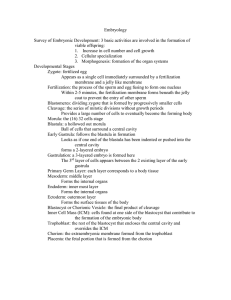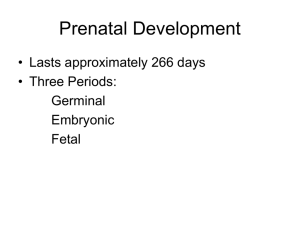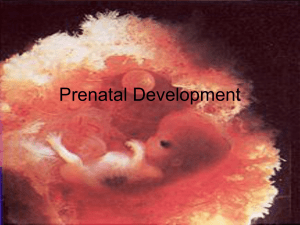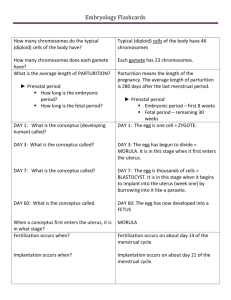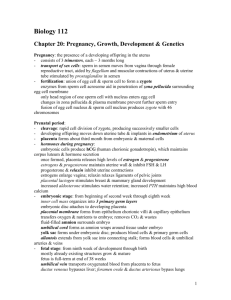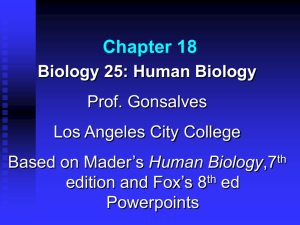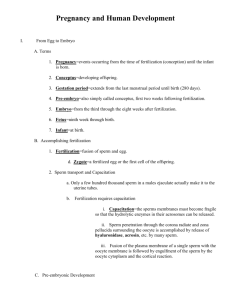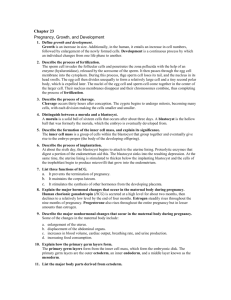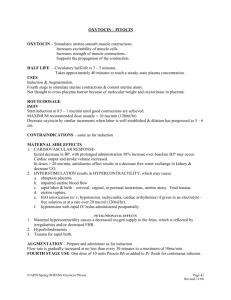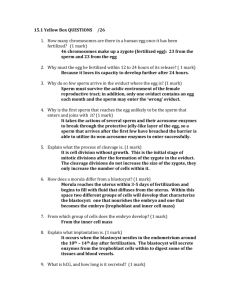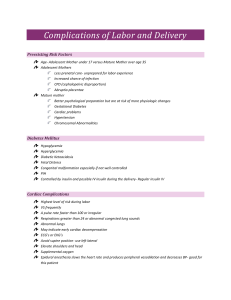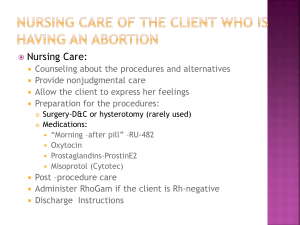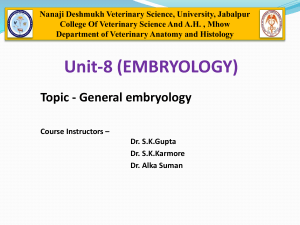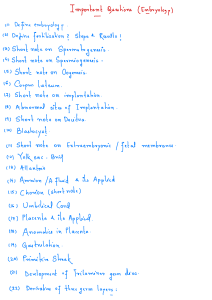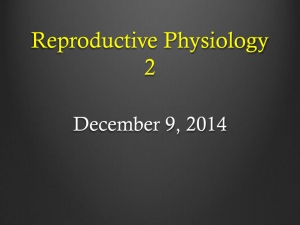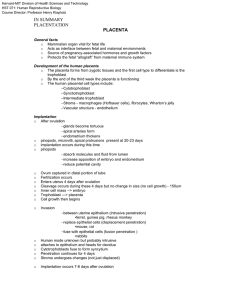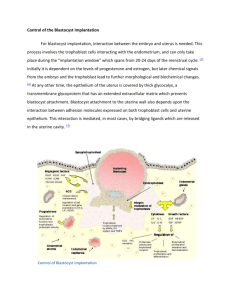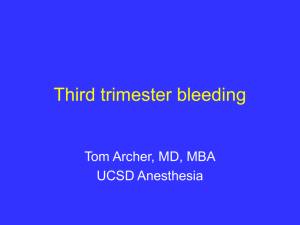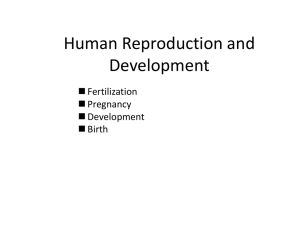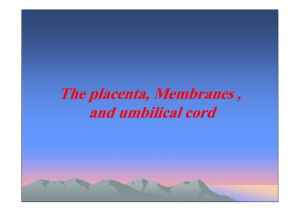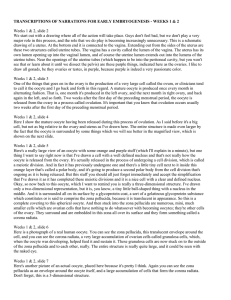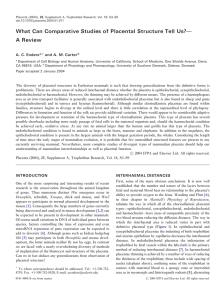Life Stages - Belle Vernon Area School District
advertisement
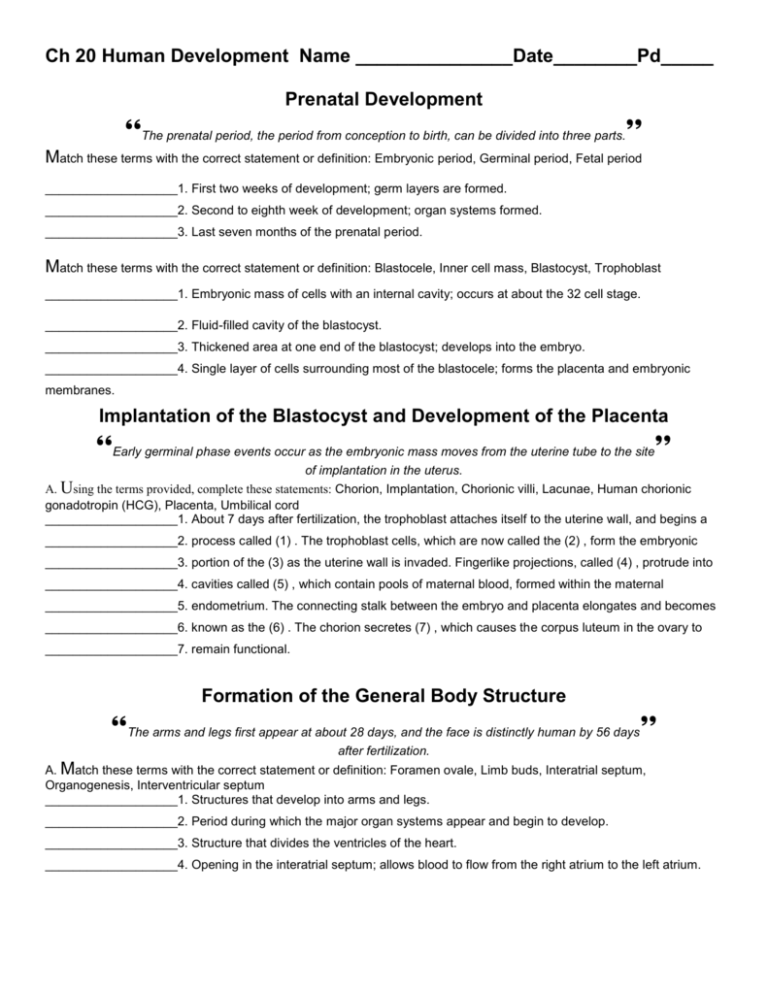
Ch 20 Human Development Name _______________Date________Pd_____ Prenatal Development ❛❛The prenatal period, the period from conception to birth, can be divided into three parts.❜❜ Match these terms with the correct statement or definition: Embryonic period, Germinal period, Fetal period ___________________1. First two weeks of development; germ layers are formed. ___________________2. Second to eighth week of development; organ systems formed. ___________________3. Last seven months of the prenatal period. Match these terms with the correct statement or definition: Blastocele, Inner cell mass, Blastocyst, Trophoblast ___________________1. Embryonic mass of cells with an internal cavity; occurs at about the 32 cell stage. ___________________2. Fluid-filled cavity of the blastocyst. ___________________3. Thickened area at one end of the blastocyst; develops into the embryo. ___________________4. Single layer of cells surrounding most of the blastocele; forms the placenta and embryonic membranes. Implantation of the Blastocyst and Development of the Placenta ❛❛Early germinal phase events occur as the embryonic mass moves from the uterine tube to the site❜❜ of implantation in the uterus. A. Using the terms provided, complete these statements: Chorion, Implantation, Chorionic villi, Lacunae, Human chorionic gonadotropin (HCG), Placenta, Umbilical cord ___________________1. About 7 days after fertilization, the trophoblast attaches itself to the uterine wall, and begins a ___________________2. process called (1) . The trophoblast cells, which are now called the (2) , form the embryonic ___________________3. portion of the (3) as the uterine wall is invaded. Fingerlike projections, called (4) , protrude into ___________________4. cavities called (5) , which contain pools of maternal blood, formed within the maternal ___________________5. endometrium. The connecting stalk between the embryo and placenta elongates and becomes ___________________6. known as the (6) . The chorion secretes (7) , which causes the corpus luteum in the ovary to ___________________7. remain functional. Formation of the General Body Structure ❛❛The arms and legs first appear at about 28 days, and the face is distinctly human by 56 days❜❜ after fertilization. A. Match these terms with the correct statement or definition: Foramen ovale, Limb buds, Interatrial septum, Organogenesis, Interventricular septum ___________________1. Structures that develop into arms and legs. ___________________2. Period during which the major organ systems appear and begin to develop. ___________________3. Structure that divides the ventricles of the heart. ___________________4. Opening in the interatrial septum; allows blood to flow from the right atrium to the left atrium. Parturition ❛❛Parturition (the birth process) is calculated to be 280 days from the last menstrual period (LMP).❜❜ A. Match these terms with the correct statement or definition: First stage of labor, Third stage of labor, Second stage of labor ___________________1. From the onset of regular contractions until the cervix dilates to 10 cm. ___________________2. From the time of maximal cervical dilation until the baby exits the vagina. ___________________3. Expulsion of the placenta from the uterus. Match these terms with the correct statement or definition: Colostrum, Oxytocin, Lactase, Prolactin, Meconium, Surfactant ___________________1. Substance that coats the inner surface of the alveoli; reduce surface tension of the lungs. ___________________2. Greenish anal discharge in the newborn. ___________________3. Enzyme in the small intestine that digests milk sugar. ___________________4. Secretion from the mammary glands for the first few days following parturition; contains little fat and less lactose than milk. ___________________5. Anterior pituitary hormone that stimulates milk production. ___________________6. Posterior pituitary hormone produced in response to mechanical stimulation of the breast; induces milk "letdown". Match these hormones with the correct statement or definition: ACTH, Progesterone, Estrogen, Prostaglandins, Oxytocin ___________________1. Hormone that inhibits uterine muscle contraction. ___________________2. Hormones that directly stimulate uterine smooth muscle. ___________________3. Fetal pituitary hormone; stimulates the adrenal gland to secrete cortical steroids, which in turn increase estrogen and prostaglandin secretion. Life Stages ❛❛Life can be divided into at least eight stages from fertilization to death.❜❜ Match these life stages with the correct definition: Adolescence, Fetus, Adult, Germinal, Childhood, Infant, Embryo, Neonatal ___________________1. Period from birth to one month after birth. ___________________2. Period from one month after birth to one or two years. ___________________3. Period from one or two years after birth to puberty. ___________________4. Period from puberty to 20 years. ___________________5. Period from 20 years to death.
